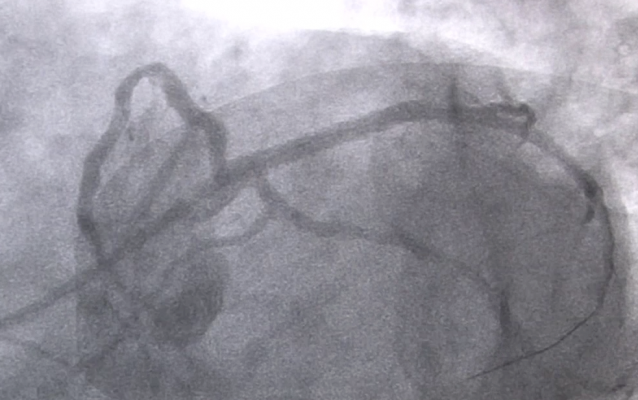
July 11, 2013 — In a clinical study that included nearly 6 million Medicare Advantage and Medicare fee-for-service beneficiaries from 12 states, rates of angiography and percutaneous coronary interventions were significantly lower among Medicare Advantage beneficiaries and geographic variation in procedure rates was substantial for both payment type. The study was published in the July 10 issue of JAMA.
“Treatment of cardiovascular disease is one of the largest drivers of healthcare cost in the United States, accounting for $273 billion annually. Cardiovascular procedures are major contributors to this high cost,” according to background information in the article. “Little is known about how different financial incentives between Medicare Advantage and Medicare fee-for-service (FFS) reimbursement structures influence use of cardiovascular procedures.”
“Under the Medicare FFS reimbursement structure, physicians are paid more for doing more procedures. In contrast, integrated delivery systems that provide care for Medicare Advantage beneficiaries receive a capitated payment, and physicians working in these settings are not paid more for doing more procedures,” the authors write.
Daniel D. Matlock, M.D., M.P.H., of the University of Colorado School of Medicine, Aurora, and colleagues conducted a study to compare the overall rates and local area rates of coronary angiography, percutaneous coronary intervention (PCI), and coronary artery bypass graft (CABG) surgery between Medicare Advantage and Medicare FFS beneficiaries living in the same communities. The study, which included 878,339 Medicare Advantage patients and 5,013,650 Medicare FFS patients older than 65 years of age, compared rates of these procedures between 2003-2007 across 32 hospital referral regions (HHRs) in 12 states.
The researchers found that compared with Medicare FFS patients, Medicare Advantage patients had lower age-, sex-, race-, and income-adjusted procedure rates for angiography and PCI, but similar rates for CABG surgery. There were no differences between Medicare Advantage and Medicare FFS patients in the rates of urgent angiography. When examining procedure rates across HHRs, there was wide geographic variation among Medicare Advantage patients and Medicare FFS patients.
Across regions, the authors found no statistically significant correlation between Medicare Advantage and Medicare FFS beneficiary utilization for angiography and modest correlations for PCI and CABG surgery. Among Medicare Advantage beneficiaries, adjustment for additional cardiac risk factors had little influence on procedure rates.
“The finding that Medicare Advantage patients have lower rates of angiography and PCI underscores the need for additional research to determine the extent to which this is attributable to differences in population characteristics, more efficient utilization of procedures among Medicare Advantage patients (i.e., overutilization in Medicare FFS), or harmfully restrictive management of utilization among Medicare Advantage patients (i.e., underutilization in Medicare Advantage). One explanation for the differences in rates seen in this report could be that Medicare Advantage beneficiaries are healthier and require fewer cardiovascular procedures than Medicare FFS beneficiaries,” the authors write.
“Geographic variation in health services in the Medicare FFS population has fueled the perception of an inefficient, ineffective U.S. health care system. Until the causes of geographic variation are understood, shedding light on the sources of variability remains an important research and quality improvement endeavor. Indeed, comparing ‘the effectiveness of accountable care systems and usual care on costs, processes of care, and outcomes for geographically defined populations of patients’ is one of the Institute of Medicine's 100 priorities for comparative effectiveness research. Capitation in various forms is anticipated to be an effective means of reducing future health care cost growth, particularly cost growth resulting from unnecessary care. Although in this study capitation was associated with lower procedure rates for angiography and PCI, the substantial geographic variation that remained despite the reimbursement structure suggests that capitation alone may not lead to reductions in the wide variations seen in use of cardiovascular procedures.”
“However, too little attention, for too long, has been directed toward ensuring the quality of preference-sensitive patient decisions. Moreover, if high-quality decisions, under the wide range of circumstances in medicine, are a worthy goal, investment is necessary to advance the science of clinical decision making, including increasing the understanding of the vulnerabilities of current approaches and developing ways to improve performance and ensure that the patient's interests are best served. Ultimately, the goal is not to eliminate variation but to guarantee that its presence throughout healthcare systems derives from the needs and preferences of patients.”
For more information: media.jamanetwork.com


 April 22, 2024
April 22, 2024 








